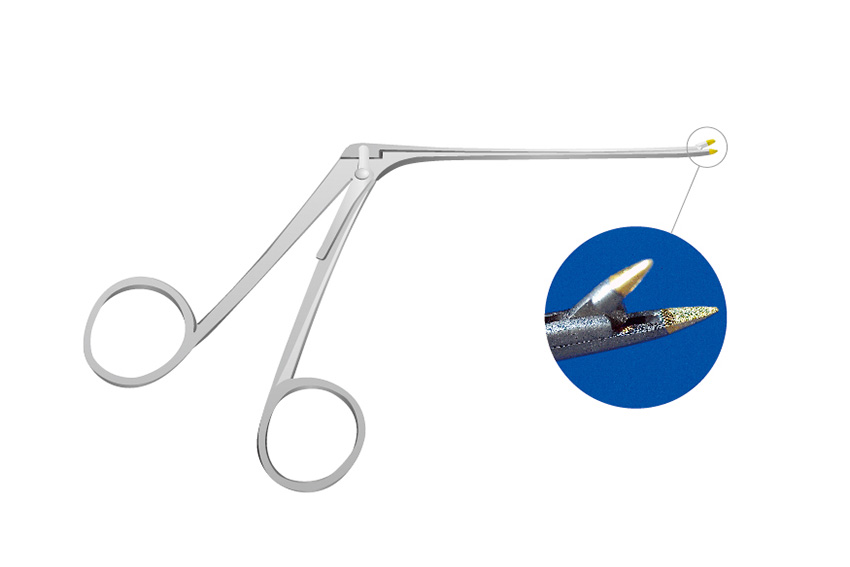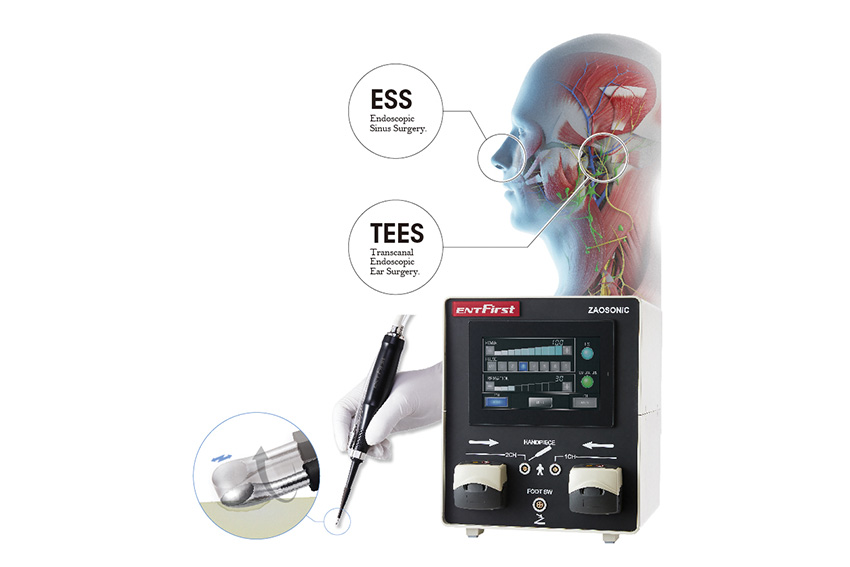Daiichi Medical is aiming to explore the intersection of medical technology, global expansion, and patient-centered solutions through its ENT treatment for global healthcare excellence.

Japan's aging population has placed increasing pressure on social security expenses and public finances. To address these challenges, there is a shift towards reducing medical costs by transitioning from a treatment-oriented healthcare system to one that emphasizes prevention, aided by rapid advancements in technology and the analysis of big data related to individual patients. In this evolving landscape, what role do you envision digital technologies playing in transforming the healthcare system in Japan, and how do they contribute to the growth of preventive measures?
Addressing this issue is quite challenging in Japan, primarily due to a general resistance to change. There are two major concerns at play here: cybersecurity and privacy issues. I currently hold the position of Vice Chairman of the Association of Medical Devices, an organization with over one-hundred-member companies. Within this association, various committees deliberate on the potential for utilizing robots in surgical procedures and other advanced technologies in the medical field. We possess the capabilities to implement these cutting-edge technologies, but it's important to recognize that this transformation will take time.
Japan boasts the world's longest life expectancy, with individuals living to approximately 85 years old, and nearly 28% of the population being aged 65 and above. In light of this significant demographic shift, what challenges and opportunities does it present for your company? Additionally, could you share insights into the technologies your company has developed to support doctors in reducing overtime hours while delivering care to patients in this context of an aging population?
Being an ISO-certified company, we put great thought into our quality policy. Our aim is to provide the highest quality and to achieve this, we must consider not only the welfare of patients and healthcare providers but also the broader landscape of social security and healthcare structures. This holistic perspective guides us as we develop new technologies and products. A crucial element involves efficient time management to support doctors in delivering care. This approach is at the core of our efforts across all phases of product development, from design and manufacturing to sales.
As medical practices evolve in tandem with advances in medical technologies, it's noted that postgraduate training for medical professionals can be quite extensive. However, some experts contend that these training programs may not adequately introduce emerging technologies such as AI, IT, and robotics to medical professionals. In this context, how does your company facilitate the process of keeping medical professionals updated on your latest products and technologies? What educational tools and services do you provide to your clients to ensure they remain current and proficient in utilizing these innovations?
As I mentioned earlier, I hold the position of Vice Chairman in both the Association of Medical Devices and the Society of Medical Instruments. In a recent conference we held last week, we delved into the topic of robotics in the medical field. One of the key concerns we discussed is that Japanese doctors often face challenges in keeping up with new technologies, particularly in the realm of robotics. Many of these cutting-edge technologies are developed in the United States, making it difficult for Japanese doctors to stay current with American advancements.
Japanese doctors can more easily stay updated on Japan's own technological developments, and our products are designed with the specific needs and preferences of Japanese doctors in mind. However, it's essential that we effectively communicate how to use and maintain our equipment and products to doctors, patients, and clinical engineers. To facilitate this, we have created video tutorials as a helpful resource.

Diamond Forceps
Since your establishment in 1952, your company has emerged as a leader in developing innovative devices for otolaryngology procedures, with product divisions catering to the needs of both ENT and tracheoesophageal fields. In your assessment, which of these fields holds the greatest growth potential for your company? Additionally, while your products are currently focused on otolaryngology, do you foresee potential expansion into other medical fields in the future?
As a smaller company, we recognize that we can't compete with larger firms. Our niche is in the field of ear, nose, and throat (ENT) and equilibrium research. We specialize in supplying diagnostic, surgical, and bedside devices. Out of these three types of devices, our primary focus is on diagnostic and preventative devices, as these often fall outside of health insurance coverage. For example, we provide products to assist patients recovering from cancer surgery. In cases where patients have their larynx removed and lose their ability to speak, we offer solutions through electro-larynx, enabling them to regain their speech. We also provide technologies to help patients recover their sense of smell. Our focus goes beyond rehabilitation; it's about restoring the functions that patients have lost.
In 2022, your company received recognition for its portable device designed for treating Meniere's disease, a condition characterized by symptoms like dizziness, hearing loss, and various other debilitating effects. Notably, a significant portion of patients do not respond to traditional treatments or medications for this disease. Could you provide insights into the key developments and innovations that contributed to the creation of this device? Moreover, how does this device effectively treat the symptoms associated with Meniere's disease, providing relief to patients who might not respond to other treatment methods?
Our journey began with a collaboration involving the government, academic institutions, and the private medical sector in Toyama Prefecture. Our initial steps included securing funding for testing, clinical trials, and regulatory compliance. We also conducted research on how to meet the required regulations and conduct clinical tests. It was a challenging process to work with the government to ensure our products could be certified.
In addition, we had to focus on insurance coverage to ensure that our products would benefit the patients. This involved collaboration with the main societies specializing in equilibrium research and ENT medicine, which helped establish treatment protocols using our technology. This comprehensive approach was vital to bringing our products to market and making a positive impact on patient care.
In the process of developing this technology and treatment for Meniere's disease, did your company engage in collaborations with international medical associations to incorporate their data and insights regarding this condition? Or was the focus primarily on solutions and treatment options tailored to Japan? Are you interested in marketing these solutions overseas?
While we attempted to establish international collaborations, the variations in social security systems and healthcare approaches posed significant challenges. Consequently, we focused on developing this technology exclusively within our domestic market.
I have a strong interest in marketing these solutions overseas. However, the disparities in social healthcare systems present a significant challenge. Merely exporting the device would likely not yield favorable outcomes and wouldn't be a sustainable approach.

Ultrasonic Surgical Device
Given that your company offers unique products and solutions, especially in the field of medical technology, as you seek to expand your presence overseas, are you actively seeking local partners who possess a deep understanding of the target markets and have expertise in the specific field to assist in successfully entering and navigating those markets?
The challenge we face is that Japan's technologies are highly unique, and there is a lack of expertise in using these products outside of Japan. Our products and business model are tailored specifically for the Japanese market. Our International Department has been in contact with European countries that have shown interest in our portable device for Meniere's disease. However, a significant hurdle is the need for CE marking to sell our product in Europe. The requirements for obtaining CE marking have become increasingly stringent.
In Japan, we have already conducted sufficient clinical evaluations for this device, and it has received approval from the Ministry of Health. Unfortunately, to meet the CE marking requirements, we would need to repeat these clinical evaluations in Europe. Last year, during our staff visit to Medica, a university professor suggested that since we've already conducted extensive medical evaluations in Japan, we might not need to duplicate them in Europe. This could save a substantial amount of time and resources. Some European professors, particularly in Scandinavian and Eastern European countries, have shown significant interest in our device. The next step is determining how to proceed.
Establishing an export special division in 1966 indicates a longstanding commitment to overseas business. Could you share what significance your overseas business holds for your company and your future expansion plans? Do you foresee a particular focus on expanding to other Asian regions? Additionally, what strategies do you envision using to facilitate international expansion, such as engaging in M&As or forming joint ventures?
The Japanese Ministry of Health, Labour, and Welfare (MOHS) and the Pharmaceuticals and Medical Devices Agency (PMDA) are actively promoting the export of Japan's medical system to other countries. They have already achieved success in some countries, including Australia. Daiichi Medical was relatively late in entering the international medical market. Initially, we lacked catalogs and service manuals in English. However, since 2013, we have made efforts to increase our international presence through exhibitions and engagement with international agencies. As a result, we have received promising inquiries from various countries and are currently actively seeking distributors, with our primary focus being on Australia, India, and Saudi Arabia.
This year, you are celebrating 68 years as a company. Looking ahead two years to your 70th anniversary, what dreams and aspirations do you have for the company? And, regarding your global presence, how would you like your company to be perceived in the global market as it continues to evolve and grow?
Our commitment moving forward is to continue strengthening our contributions to the ENT field. We've set a clear mission for our company, which is to transform the world by becoming a collective of experts in the ENT and equilibrium domains. However, we recognize that this isn't something we can achieve alone. We are dedicated to building partnerships and collaborations with specialists, distributors, and government entities. We are also keen on gathering insights and feedback from doctors, patients, and government officials on the challenges and issues related to social security. By actively seeking these perspectives, we aim to develop the best devices and technologies that provide optimal care for patients. We would like to change the world with our unique ENT device and ENT expert staff.
0 COMMENTS